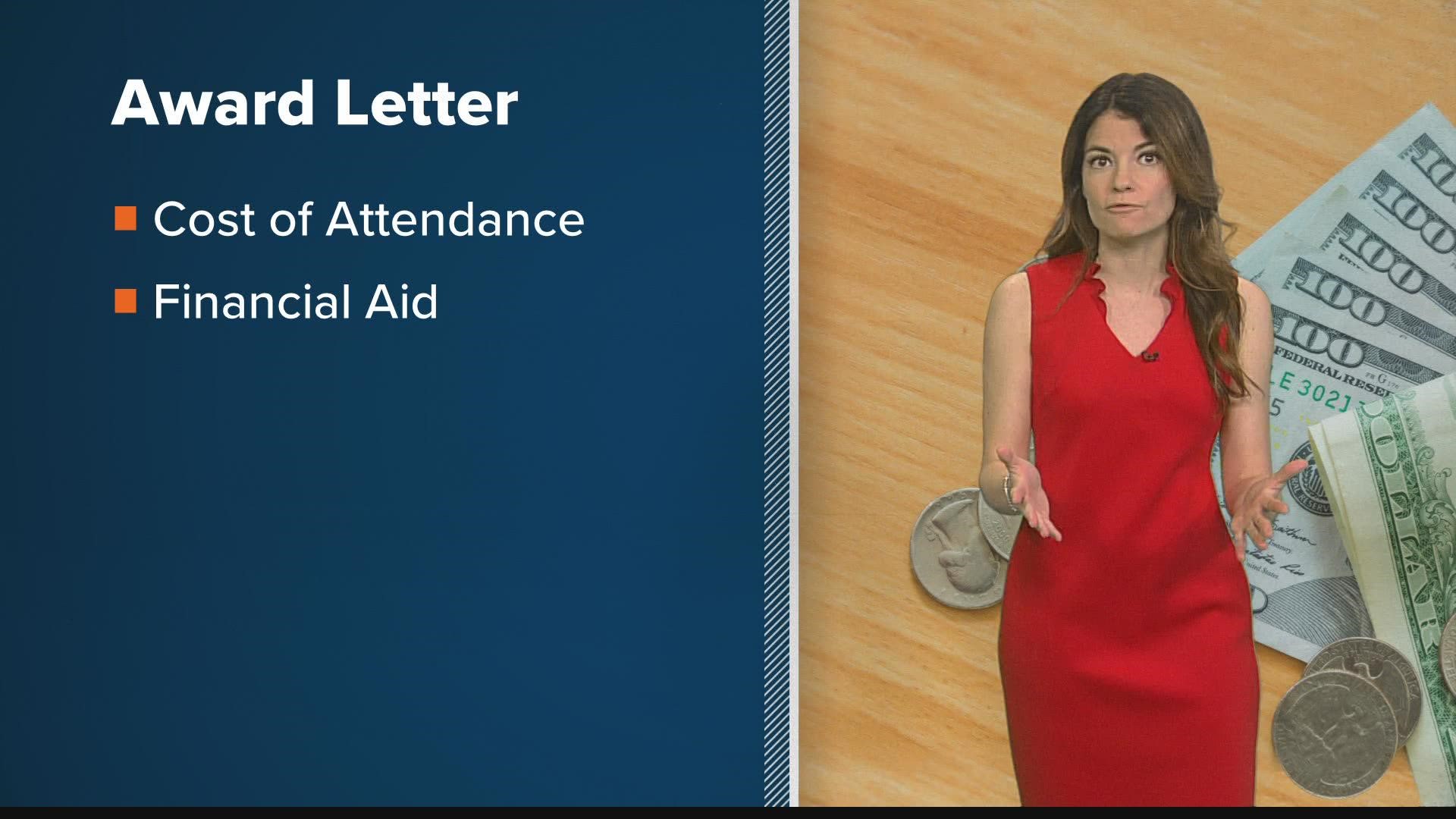INDIANAPOLIS — If one of your kids applied to college, they likely got or will get a letter describing how much money their education will cost. That letter is called an award letter. It's split up into two main buckets: the cost of attendance and how much financial aid you're receiving.
Cecilia Clark with NerdWallet said if you see a grant or scholarship, that's free money.
"Work-study is money you don't have to pay back, but you do have to work in exchange for that money. If you see 'student loan' or 'loan' in any capacity, that is not free money," Clark said.
Clark added that schools may list federal loans under financial aid, so understand that money needs to be repaid.
Next, figure out your out-of-pocket costs.
"Take that cost of attendance that you'll see on there, that big number, and subtract every line item that is not a loan. That will let you know how much you have to pay back," Clark said.
If there's an affordability gap, Clark suggests first borrowing federal loans.
"Federal loans have protections that private student loans don't have: They offer Income-Based Repayment, [and] you may have the possibility for Public Service Loan Forgiveness," she said.
Federal loans don't require a cosigner or credit.
RELATED: Yes, interest rates for new federal student loans are set to increase for 2022-2023 academic year
If that's still not enough money, enter private loans.
"If you do feel that you have a strong enough credit score, go ahead and get pre-qualified. Many lenders will let you know your terms and your interest rate with a soft credit check," Clark said.
The better the signer's credit, the better the interest rate.
To make sure your student understands how much money is at stake, create a mock, post-graduation budget.
Let's say they expect to make $60,000 a year or $5,000 a month.
Subtract from that amount taxes, rent and utilities, a car payment and insurance, groceries, savings, dining out and the loan payment with interest.
"What seemed in the beginning like a reasonable amount to borrow for your education, in the end, can turn into a $700 a month payment or more," Clark said.

